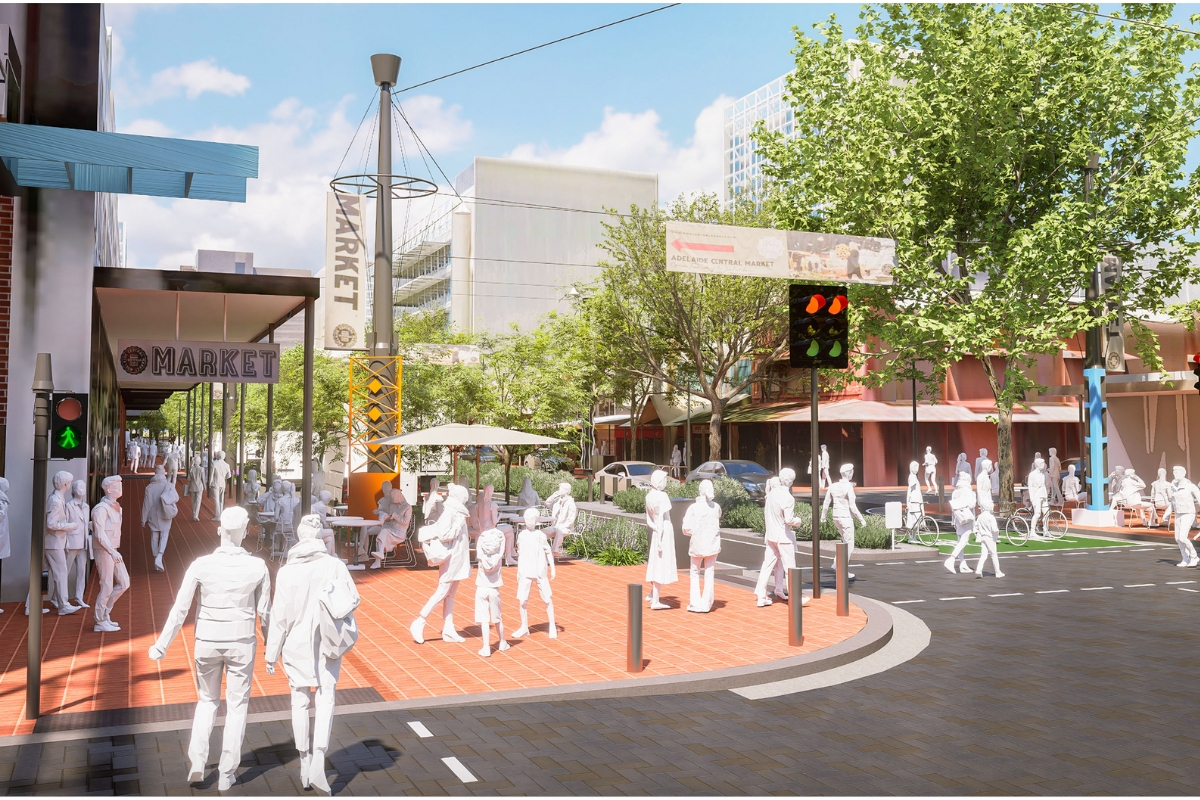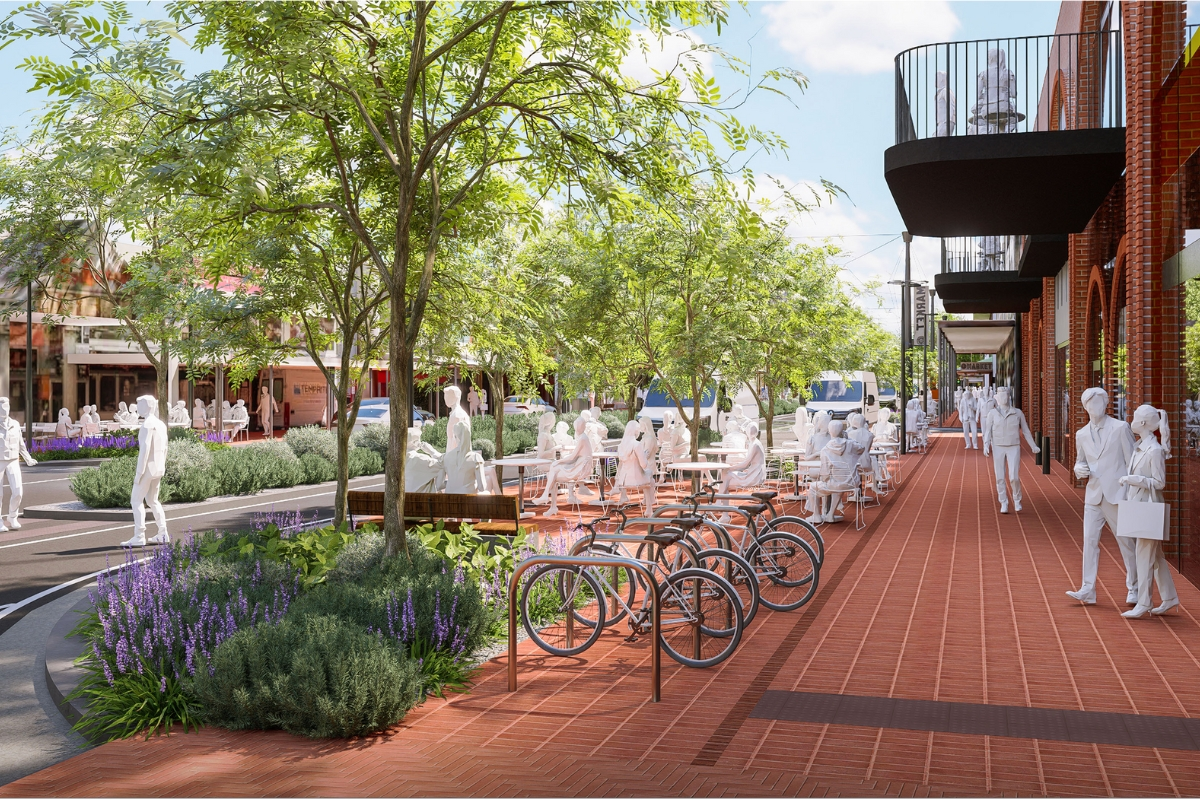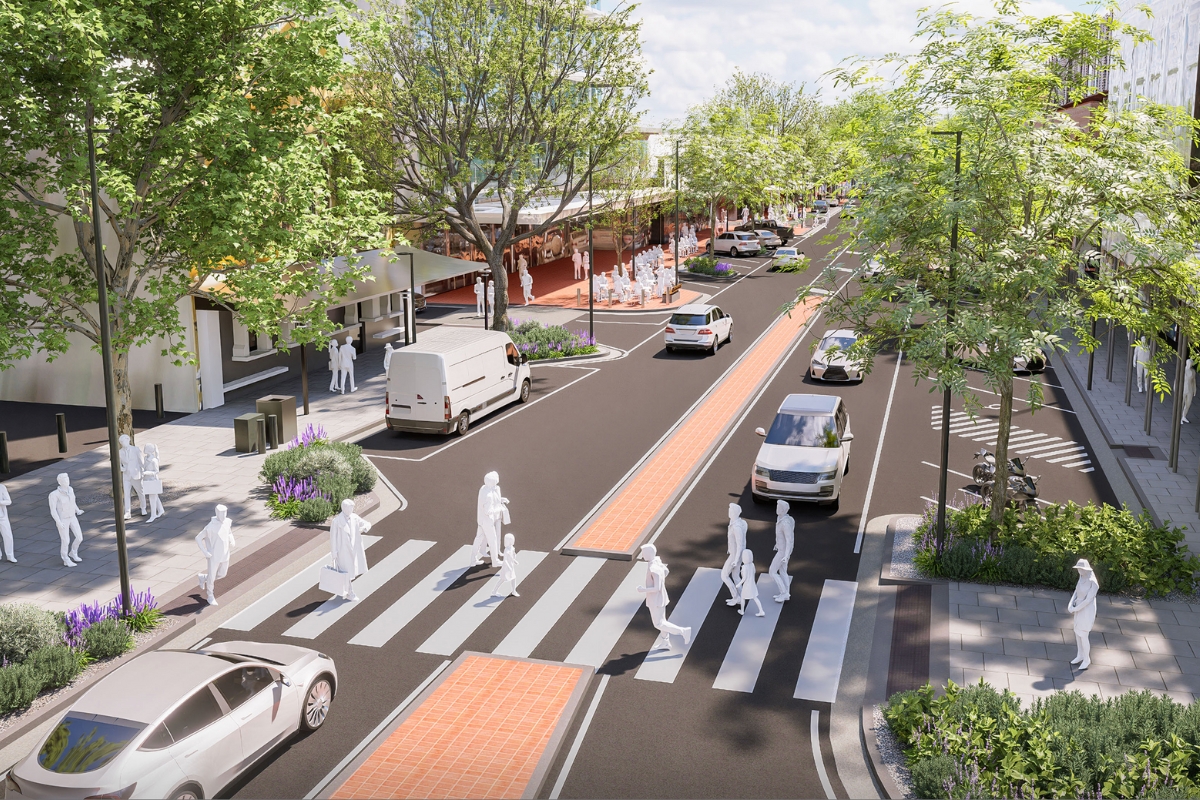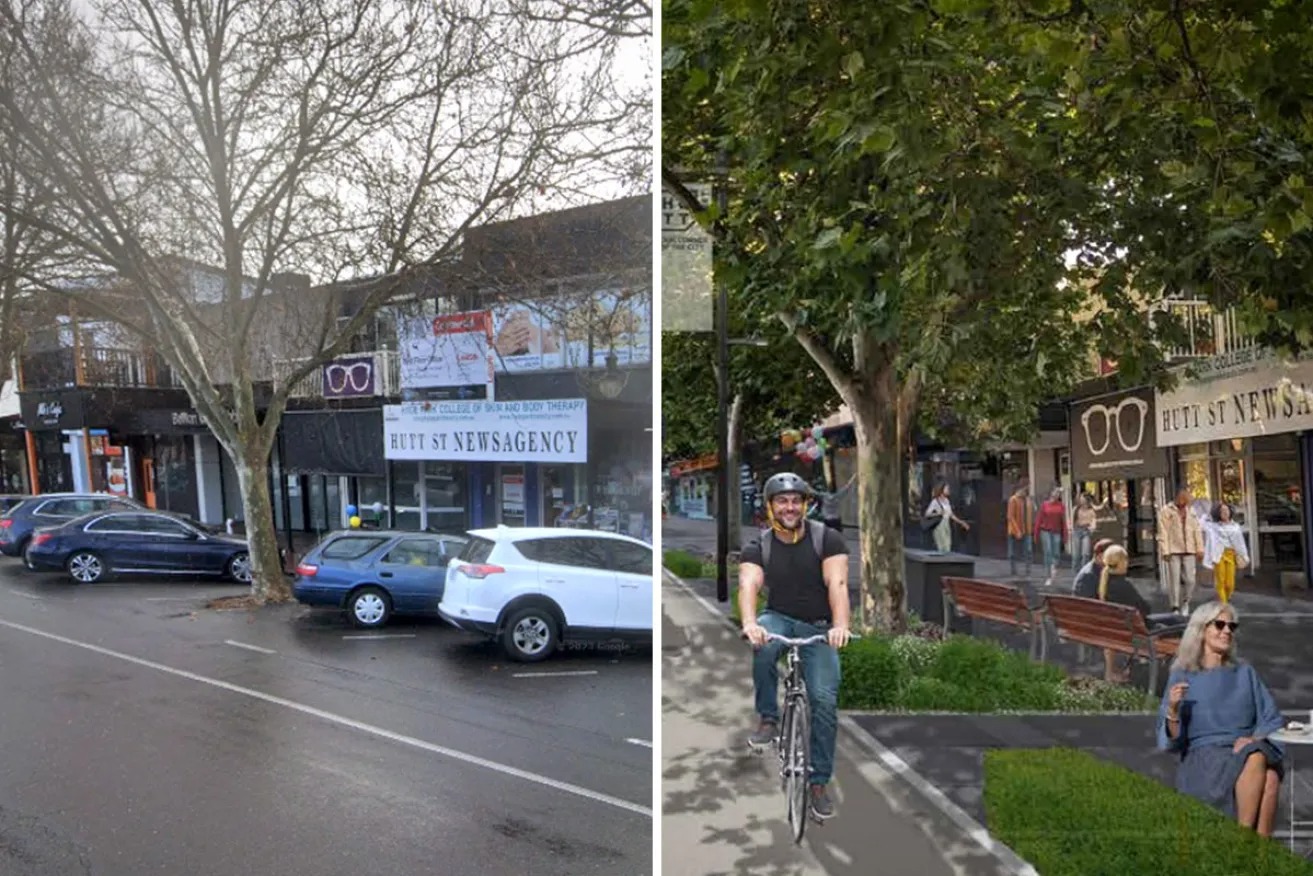Two shopping strip makeovers in $27m city street shakeup
Two of the city’s most popular dining and shopping hubs are closer to being transformed with the prized Gouger Street precinct’s slick new look unveiled for 2026. See the pictures and watch the video.
New designs have been revealed for a $15 million Gouger Street upgrade, with the stretch in front of the Central Market expected to be completed by October 2026.
This section of the Adelaide City Council makeover was expected to align with the completion of the highly anticipated Market Square development, which topped out its commercial office building on Monday.
The Market Square development – which also includes SH Hotels and Resorts Treehouse Hotel and over 11,000 square metres of retail and dining with anchor tenant Coles – was expected to open in the third quarter of 2026.
The street upgrade unveiled at a city council committee meeting on Tuesday night would widen footpaths and see 84 new trees planted – but on-street parking would be slashed from 109 to 79 bays, with 14 double loading flexi bays for the market.
City Infrastructure Director Tom McCready assured that the council expected no impact to parking on Gouger Street under the plan, saying more than 260 car parks were retained and new secure basement parking and public parking would be available at the new Market Square development.
Another $10 million would be spent on upgrading deteriorating assets on the street, like lighting, kerbs and stormwater infrastructure.

Plans included dropping the Gouger Street speed limit from 50km an hour to 30km an hour along the street – but this needed council and Infrastructure and Transport Department approval.
The designs presented at the Infrastructure and Public Works Committee were 70 per cent complete and while they included bike racks and bicycle boxes installed at signalled intersections, Lord Mayor Jane Lomax-Smith said the cycling paths were “ephemeral”.
You might like
“I probably spend more time in Gouger Street than anyone, and there are scooters day and night,” she said, adding that it needed to be addressed.
“There are bikes, and there’s an absolute plethora of Hungry Pandas [delivery drivers] who are ill-disciplined, disrespectful and extremely dangerous, and they are whizzing up and down every footpath and every street.”

When Councillor Eleanor Freeman – who works as an urban planner – said she would support the designs to “get on with it” but asked if there was scope to tweak them to better cater for a range of people, the CEO responded with “absolutely”.
“We’re putting in bike racks, which will encourage more people to ride, and we’re drastically increasing how many people live here within the city, and people will probably ride bikes as well as drive,” she said.
“If we don’t have safe infrastructure for people to wheel – gophers, e-scooters or any other kind of micromobility devices – they’re going to go into the footpath.
“Some will go on the road, sure, especially if it’s 30km an hour, but most will be on the footpath.
“The reality is, with so much outdoor dining and so many more pedestrians walking around, I think that’s a huge problem.”

The designs are still subject to minor changes as the plan is finalised and will come back to the council meeting to be passed, with work expected to begin in May 2026.
More work to be done on Hutt Street

Subscribe for updates
Two new options would now be investigated for the $12.5 million Hutt Street redesign, the most controversial of the council’s proposed main street upgrades after concerns over lost parking.
The council would explore adjusting one of its five design options to include a variety of 60-degree parking along with wider footpaths and a protected bike lane, it decided on Tuesday night.
No decision has been made on which Hutt Street option will move forward, with the council instead opting to do further work.
It would also explore adjusting a secondary option to offer safer bike path options and retain 112 car parks.
“People say ‘there’s no cyclists there now’, that’s because it’s not safe, if it’s safe, people will use it,” Councillor Freeman said during a briefing.
A council spokesperson confirmed that, depending on the amount of re-work required, the timeline for works on Hutt Street could be delayed.
Adelaide’s business community has been vocal about their opposition to cutting car parks on Hutt Street, despite a council survey revealing a majority of respondents were in favour of an option that included bike lanes and cut 132 street parking spaces down to 72.
“The primary concern was losing the car parks, if you can achieve this, everyone will be happy,” Councillor Henry Davis said on Tuesday.
A boost of about $5.9 million in annual revenue from existing visitors and $595,000 from new visits was expected by upgrading the street, according to an economic analysis by Hudson Howells, commissioned by the council.
These projections were based on an option that would reduce on-street parking to 73 spaces, including parallel parks rather than angle parks and adding protected cycle paths.
It was projected that if the council were to disregard the upgrade and do nothing, it would lose about $18.36 million over the next 30 years as the street would face economic decline and infrastructure deterioration.
The plan for Hutt Street also proposed a speed drop to 30km per hour from 50km per hour.
It comes as the council’s Infrastructure & Public Works Committee supported a speed reduction from 60km/h to 50km/h on park lands roads on Tuesday night.
The move would slash speed limits on 10 city gateway roads: Sir Donald Bradman Drive, Glover Avenue and Goodwood, Montefiore, Botanic, Glen Osmond, Wakefield, Bartels, Main North and Jeffcott roads.
The speed limit changes need to be approved at next Tuesday’s council meeting, and then by the Department of Infrastructure and Transport before they take effect.





